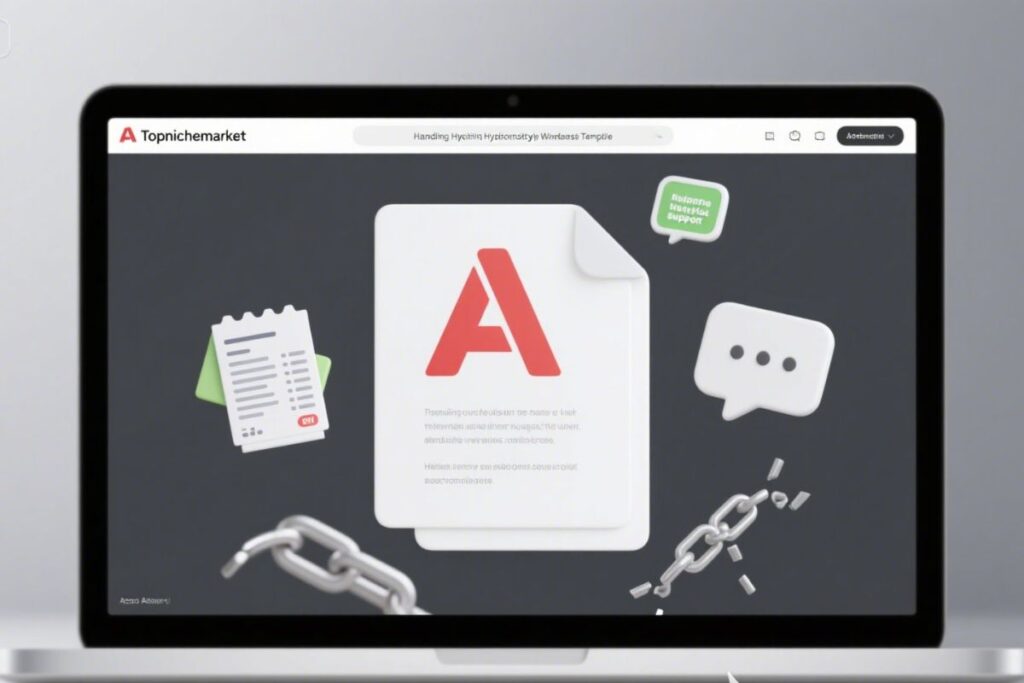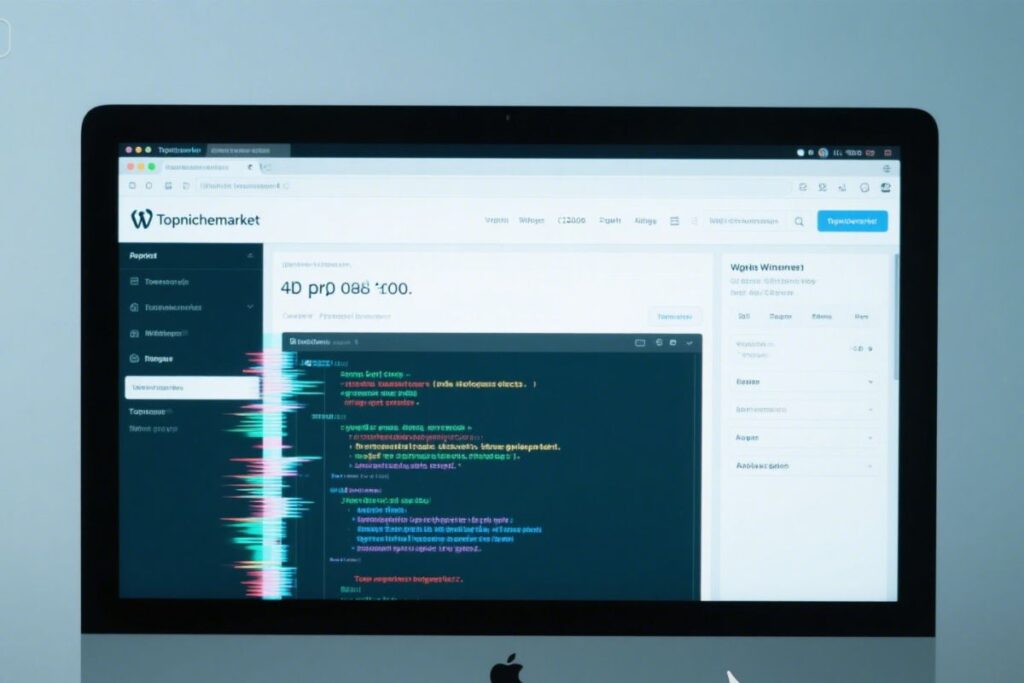Table of Contents
ToggleIntroduction: Why Adobe Reviews Matter (And What We Found)

Introduction Why Adobe Reviews Matter (And What We Found)
Adobe holds a prominent position in the software industry, delivering vital tools that support creative sectors, businesses, and individuals globally. Their products, ranging from leading photo editors to crucial document management solutions, are frequently seen as industry standards. Many individuals use software daily such as the easily accessible adobe acrobat viewer, simply for opening PDF files, or the more capable acrobat reader software for basic interactions. For more complex requirements, the complete suite of adobe acrobat features becomes essential for professional PDF editing, creation, and managing documents. Given this widespread reliance, understanding actual user experiences becomes crucial – and this is where customer reviews play a key role.
While marketing materials present a polished image, the unfiltered reality often surfaces on feedback platforms like Trustpilot. These reviews offer a direct perspective on the successes, and more frequently, the difficulties users encounter after they have made a purchase or signed up. They highlight the practical challenges of interacting with a major software provider beyond the initial download or starting a subscription.
This article takes a deep dive into a specific collection of recent Adobe reviews gathered from Trustpilot, covering late 2024 through May 2025, to identify the main topics and complaints. Our aim is to give prospective and current users a clear understanding of the issues reported, particularly highlighting the implications for those who use, or are considering using, adobe acrobat and its related offerings like the adobe acrobat viewer or the advanced acrobat reader software. We will examine the patterns in user feedback, reveal the most common pain points – spoiler: subscriptions and support are significant concerns – and share the advice and alternative solutions suggested by the reviewers themselves.
Dominant Themes in Adobe Reviews: The Subscription Shock
Reviewing recent Adobe feedback reveals one theme that is exceptionally prominent: issues surrounding billing, subscriptions, and the reported difficulty in managing accounts. This pervasive problem is what we term the “Subscription Shock,” a recurring frustrating experience described by numerous users across various Adobe products, including, importantly, paid subscriptions for adobe acrobat.
Early Cancellation Fees: The Penalty for Leaving
Consider the situation of signing up for what appears to be a monthly payment plan, only to find you are bound by an annual contract. Then, if you attempt to cancel because you are dissatisfied or your needs have changed, you are charged a substantial fee. This specific scenario is described in detail by multiple reviewers, illustrating how annual contracts are sometimes presented with monthly billing options. Charlie, Sara Jeffrey, Charlotte, Benji, sean gur, DLynn, Liz Heinbaugh, and Camelbacking all raised this issue. Users expressed feeling stuck, penalized simply for wanting to discontinue a service that was not meeting their expectations. This problem affects not just users of the creative suite; it impacts anyone who committed to an annual plan for any Adobe product billed monthly, including those using the advanced functionalities of adobe acrobat under a paid subscription. The financial repercussions are considerable, transforming a seemingly flexible payment arrangement into an expensive process for ending the service.
Difficult Cancellation & Unwanted Renewals
The problems do not stop with fees for early cancellation. A notable number of reviews emphasize the significant challenges users encounter when trying to cancel their subscriptions or prevent unwanted automatic renewals. John Ramar, Mc World, Benji, DLynn, and vesta described confusing online procedures, hidden links, or the frustration of accounts renewing automatically despite prior cancellation attempts. Adding to the anxiety, some users reported difficulties in removing their payment details, leaving them feeling exposed to potential future unwanted charges. This complicated process for cancelling seems designed as a deliberate obstacle, causing frustration and leading to involuntary continuation of subscriptions, which definitely impacts users of the full adobe acrobat product suite who decide they no longer need the service.
Misleading Free Trials
The path leading to subscription issues often starts with what appears to be a simple free trial. Reviewers such as Sara Jeffrey, Charlotte, Charles H, Camelbacking, and Danielle shared experiences where signing up for a free trial – including trials for adobe acrobat features – unexpectedly resulted in automatic enrollment in a paid subscription. Worse still, attempting to cancel *after* the trial ended, but still relatively early in the paid term, triggered those same costly early cancellation fees. This leaves users feeling misled, drawn into commitments they did not fully understand or agree to, turning a test phase into a financial liability. This particularly affects users who tried the paid version of adobe acrobat expecting to evaluate its features before committing.
Unexpected Price Hikes & Cost Concerns
Beyond the initial signup and cancellation difficulties, some users reported unsettling experiences with sudden price increases or confusing systems for credits. Mr Lister and Tim Pitman mentioned unexpected increases in monthly charges without clear communication. Others voiced general dissatisfaction with the overall cost of Adobe’s subscription model, especially when coupled with confusing usage credits for specific services. This adds another layer of financial unpredictability to the Adobe user experience, making long-term financial planning for tools like adobe adobe acrobat or other professional software feel unstable.
Customer Support: A Point of Major Frustration

Customer Support A Point of Major Frustration
If encountering problems with billing or software glitches is the issue, contacting customer support should provide the solution. However, based on the reviews examined, Adobe’s customer support itself emerges as a major source of frustration rather than a resolution. Reviewers widely reported negative feedback regarding their interactions with Adobe’s support channels.
The Challenge of Reaching and Getting Help
Simply getting connected with a helpful representative seems to be a challenge in itself. Reviewers such as Kir Nazarov and David Odenthal detailed difficulties in locating contact options, enduring lengthy waiting times, or experiencing frustratingly short interactions where chat agents disconnected without resolving the issue. Language barriers and difficulties in understanding support staff were also mentioned (Amber Rossow), adding further complexity to an already stressful situation. For a user facing an urgent problem with their adobe acrobat license or a critical billing error, these delays and communication problems are more than just inconvenient; they can severely disrupt their workflow and cause significant stress.
Negative and Unhelpful Interactions
Even when users successfully get in touch with support, the interaction itself is frequently described as unhelpful or even negative. Mrs O, Tim Pitman, and Liz Heinbaugh recounted experiences with representatives perceived as uncooperative, aggressive, or simply not listening to the user’s problem. Requests for remote access were sometimes viewed as unreasonable or overly insistent (David Odenthal). Users felt their concerns were not being taken seriously, or that support staff prioritized following company policies over genuinely helping resolve issues. This type of unsupportive interaction increases user frustration, turning a request for assistance into a confrontational experience, regardless of whether the issue was related to adobe acrobat or a different product.
Lack of Resolution
Ultimately, the purpose of contacting support is to have a problem fixed. However, numerous reviewers reported that their issues – including potentially complex matters like incorrect billing for adobe adobe acrobat or resolving licensing conflicts – remained unresolved after contacting support, often necessitating multiple, frustrating follow-ups. Kir Nazarov, Mrs O, and David Odenthal highlighted the ineffectiveness of their support interactions, leaving them with persistent problems, ongoing billing errors, or lingering technical issues. This failure to provide effective solutions means users are left in a difficult position, paying for services they cannot fully use or facing continued financial hardship, regardless of whether their primary issue was with adobe acrobat viewer access or a complex technical problem with the full adobe acrobat suite.
Software Experience Issues Mentioned by Users

Software Experience Issues Mentioned by Users
While billing and support issues constitute the majority of complaints, some reviews also mention frustrations directly connected to the Adobe software itself. These software-related issues, although less frequently cited in the provided data compared to subscription problems, still contribute to the overall negative user experience and offer insights into potential challenges faced by users of products including adobe acrobat.
User Interface Changes & Usability
Adobe frequently updates its software, adding new features and refining interfaces. However, these updates are not always well-received by users. Dave Rudloff, in a review of Photoshop Elements 2025, expressed frustration with significant changes to the user interface that made the software less intuitive and removed convenient features. While this specific review focuses on Photoshop Elements, it highlights a potential wider issue within the Adobe ecosystem: updates can sometimes prioritize new designs over established user workflows and ease of use. This is a relevant consideration for users of the full adobe acrobat suite, who might encounter disruptive changes to tools they rely on daily for managing documents.
Performance, Crashes & Bugs
Software stability is critically important for professional tools. Several reviews mention encountering performance issues, software crashes, or unexpected bugs. Kir Nazarov, Camelbacking, and Liz Heinbaugh referred to problems such as random logouts, applications closing unexpectedly, or files being affected, potentially indicating data loss or corruption. These technical glitches interrupt work, cause lost time, and reduce confidence in the software’s reliability. Although no specific review in the provided data explicitly detailed adobe acrobat crashes, the pattern of technical instability reported across various Adobe products suggests that users of adobe adobe acrobat or even the free acrobat reader software are not necessarily immune to experiencing frustrating bugs or performance slowdowns, particularly after updates.
Licensing & Older Products
A significant and deeply frustrating issue for some long-time Adobe users concerns the licensing and accessibility of older, *purchased* software versions. FDAbbott described extreme difficulty using their legitimately owned, perpetual license for CS6 (a previous generation suite that included programs like Photoshop and Illustrator, from before the full Creative Cloud subscription model). The complaint is that despite owning the license outright, the software now requires online validation which is difficult or impossible to obtain due to discontinued support. This essentially renders purchased software unusable or incredibly difficult to access. This issue is highly pertinent to users who might possess older, perpetual licenses for adobe acrobat versions released before the subscription model became widespread. It underscores Adobe’s shift away from supporting perpetual licenses, effectively pushing users towards the subscription model and potentially devaluing past investments in software like older versions of adobe acrobat.
Focusing on Acrobat: What Reviews Imply for Adobe Acrobat Users

Focusing on Acrobat What Reviews Imply for Adobe Acrobat Users
Considering that many readers are likely interested in or actively use Adobe’s tools for PDF files, let’s specifically summarize what these general reviews suggest for users of the adobe acrobat viewer, the free acrobat reader software, and the full paid adobe acrobat suite, or when referring to the product from the company perspective, adobe adobe acrobat.
As mentioned earlier, the reviews provided that *specifically* reference “Acrobat” (such as those from Sara Jeffrey and Charles H) tend to focus directly on the most prominent issue: problems with subscriptions and trials. Users were caught off guard by free trials transitioning into paid subscriptions for adobe acrobat, or faced the early cancellation fees for an adobe acrobat annual plan they mistakenly believed was monthly. This confirms that the significant “Subscription Shock” themes discussed earlier are highly relevant and significantly impact users of the paid versions of adobe acrobat.
But what about the other issues? The widespread complaints about customer support being difficult to contact, unhelpful, and failing to resolve problems would undoubtedly affect anyone needing assistance with *any* version of Adobe’s PDF software. Whether you are having trouble installing the free acrobat reader software, dealing with licensing issues for the full adobe acrobat, or have questions about your adobe acrobat subscription billing, these reviews indicate you are likely to encounter significant obstacles in receiving effective help. Users of even the basic adobe acrobat viewer requiring simple assistance could face this frustration.
Furthermore, the software experience issues, while not consistently naming Acrobat in the provided snippets, reveal general trends within Adobe’s development and support practices. The difficulty in using older licensed software like CS6 reported by FDAbbott serves as a strong caution for anyone still holding onto older perpetual licenses of adobe acrobat. Adobe’s history suggests they are actively moving away from supporting these older models, potentially compelling users towards the subscription-based adobe adobe acrobat product whether they prefer it or not. While performance problems and user interface changes were not specifically highlighted for Acrobat in *these particular* reviews, the fact that they impact other major Adobe products (like Photoshop Elements mentioned by Dave Rudloff, or the general instability noted by Kir Nazarov) suggests that users of adobe adobe acrobat or even the free acrobat reader software should be aware that these types of software-level frustrations are possible within the Adobe ecosystem.
In summary, while the core functionality of adobe acrobat – from the simple adobe acrobat viewer to the powerful editing features of paid adobe acrobat – may continue to be a leader in the industry, the user experience surrounding the *company* (adobe adobe acrobat) and its subscription models, trials, and support appears to be a major source of reported difficulties, directly affecting those who depend on their PDF solutions.
The Rare Positive Note: An Exception to the Trend?
Amidst the significant volume of negative feedback, one review stands out as a rare positive experience, indicating that satisfactory outcomes are, on occasion, achievable. Vivien Jandlová shared an experience that sharply contrasts with the majority sentiment reported.
After being unexpectedly charged for an Adobe Lightroom subscription, Vivien contacted support and, according to their review, was able to successfully obtain a full refund and cancel the service efficiently. This single positive report demonstrates that Adobe’s support *can* sometimes function effectively and provide a satisfactory resolution, even in cases involving unexpected charges.
However, it is important to view this within the context of the numerous other reviews analyzed, which predominantly describe the opposite outcome – difficult cancellations, unhelpful support, and unresolved billing issues. Vivien Jandlová’s positive result appears to be an anomaly rather than the norm based on the provided data, offering a glimmer of hope but not fundamentally changing the overall picture of user dissatisfaction. It suggests that while the system *can* potentially work, users should not anticipate it being easy or guaranteed based on the typical experiences reported.
Alternatives & User Advice Based on Reviews

Alternatives & User Advice Based on Reviews
Faced with considerable frustration over subscriptions, costs, and support, many reviewers were not just expressing complaints; they were actively looking for alternatives or providing practical advice learned from their challenging experiences. This section compiles the “solutions” and “practical instructions” suggested by users navigating the difficult landscape of adobe adobe acrobat and other Adobe product issues.
Exploring Alternative Software
A clear consequence of user dissatisfaction is the drive to find competing products. Several reviewers explicitly mentioned switching to or recommending alternatives to Adobe software. Users who were fed up with subscription models or specific program issues highlighted:
- Affinity: Frequently mentioned as an alternative to Photoshop, Illustrator, and InDesign, offering options for perpetual licenses.
- Sony Vegas and Davinci Resolve: Suggested as alternatives for video editing, moving away from Adobe Premiere Pro.
- Storyblocks: Recommended as an alternative source for stock media, potentially avoiding issues with Adobe Stock.
Although none of the provided reviews explicitly named alternatives to adobe acrobat, the underlying feeling of users actively wanting to leave the Adobe ecosystem due to cost, subscription, and support problems strongly implies that users facing these issues with adobe acrobat are likely also exploring alternative PDF editors, document management tools, or even different methods that reduce their dependence on Adobe. The existence of viable competitors like Nitro PDF, Foxit PhantomPDF, or various online tools offers an option for users dissatisfied with adobe adobe acrobat‘s practices.
Tips for Dealing with Adobe
Reviewers who had struggled with Adobe’s systems offered valuable, hard-earned advice for fellow users or potential customers:
- Use PayPal for Subscriptions: Charlie specifically advised using PayPal as the payment method because it provides an extra layer of protection and makes it easier to cancel recurring payments or dispute charges compared to using a credit card directly. This is a useful tip for anyone signing up for an adobe acrobat subscription or any other Adobe product.
- Read Fine Print Carefully: Mr Lister and others stressed the crucial importance of thoroughly reading the terms and conditions, especially for free trials and subscription plans. Details about auto-renewal and early cancellation fees are often present within the complex legal text, though perhaps not immediately obvious. Understanding this is vital before trying a paid version of adobe acrobat or any other offering.
- Document Everything: DLynn and others emphasized the necessity of keeping detailed records of all interactions with Adobe, including chat transcripts, emails, contact dates, and screenshots of terms or account pages. This documentation can be essential evidence if disagreements arise, particularly concerning billing errors for adobe adobe acrobat or difficulties with cancellation.
There was also one review (Mc World) that mentioned considering “pirating” the software as a reaction to the perceived unfairness. However, it is absolutely essential to strongly advise *against* software piracy. Downloading and using pirated software is illegal, unethical, and exposes users to significant security risks, including malware and viruses. The frustration with Adobe’s practices is understandable based on these reviews, but finding legitimate alternative software or carefully managing subscriptions based on the tips above are the recommended and responsible ways forward.
Conclusion: Navigating the Adobe User Experience in 2024/2025

Conclusion Navigating the Adobe User Experience in 20242025
Our examination of recent Adobe reviews from late 2024 and early 2025 reveals a user environment filled with significant difficulties, particularly focused on the company’s billing methods, subscription plans, and customer support. The prevalent sentiment expressed by reviewers on Trustpilot indicates frustration, feeling trapped by agreements, being charged unexpected fees, and receiving inadequate support when problems occur.
These issues affect users of all Adobe products without discrimination, from creative professionals who rely on the entire suite to individuals and businesses using essential tools like the adobe acrobat viewer, the fundamental acrobat reader software, or the comprehensive paid version of adobe acrobat. The “Subscription Shock” – characterized by confusing terms, penalties for early cancellation, and difficult processes for ending subscriptions – stands out as the most common and intensely felt complaint. The customer support experience, widely reported as unhelpful and hard to navigate, makes these problems worse, leaving users with issues that are not resolved.
While Adobe’s software itself, including the powerful capabilities of adobe acrobat, often remains a benchmark in the industry, these reviews highlight a notable gap between the quality of the tools and the perceived fairness and effectiveness of the company’s business operations and support systems. The difficulty in accessing or using older, legitimately purchased software also raises questions about the long-term value and accessibility of Adobe products in a future dominated by subscriptions, potentially affecting users who invested in older perpetual licenses for adobe acrobat.
Based on this snapshot of recent user feedback, the conclusion is clear: potential users, especially individuals, small businesses, or anyone sensitive to unpredictable costs and potentially difficult administrative processes, should proceed with caution. Signing up for a free trial or a subscription for adobe acrobat or any other Adobe product demands careful attention to the terms and conditions. The seemingly convenient monthly payment choice often conceals an annual commitment with a costly fee for exiting early.
For those already within the Adobe ecosystem, keeping detailed records of interactions, fully understanding cancellation policies, and considering legitimate alternatives are practical steps informed by the experiences shared by these reviewers.
Ultimately, while adobe adobe acrobat remains a powerful suite, navigating the user experience in 2024/2025, according to these reviews, requires being observant and prepared to potentially face significant challenges that are outside of the software’s core functionality.
We encourage readers to share their own experiences with Adobe in the comments below. Have you encountered similar problems with adobe acrobat viewer, acrobat reader software, or paid adobe acrobat subscriptions? Your insights can assist others in navigating this complex situation. Always remember to carefully read terms and conditions before committing to any software subscription.
“`















